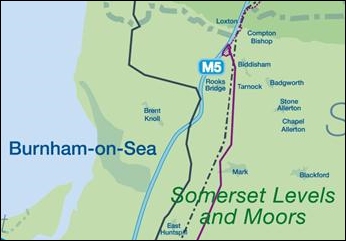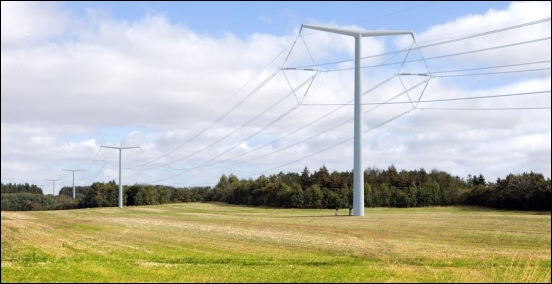A pressure group fighting proposals for huge pylons carrying high-voltage power lines from Hinkley Point C nuclear power station near Burnham-On-Sea is calling on the Government to reconsider burying them.
The call from No Moor Pylons follows National Grid’s announcement last week that it is to use £500 million of taxpayers’ money to remove unsightly pylons from four protected landscapes – Winterborne Abbas in Dorset and three National Parks: the Peak District, New Forest and Snowdonia.
 National Grid’s proposals for carrying power from the planned Hinkley Point C nuclear plant to an electricity sub-station near Sea Mills would see a mixture of conventional and new design pylons along much of the route through the Burnham area, although it will bury eight kilometres where it runs through the Mendip Hills Area of Outstanding Natural Beauty.
National Grid’s proposals for carrying power from the planned Hinkley Point C nuclear plant to an electricity sub-station near Sea Mills would see a mixture of conventional and new design pylons along much of the route through the Burnham area, although it will bury eight kilometres where it runs through the Mendip Hills Area of Outstanding Natural Beauty.
Paul Hipwell, from No Moor Pylons, told Burnham-On-Sea.com: “We welcome National Grid’s plans to remove some pylons from some scenic areas. And of course, we all agree with the Government and National Grid that pylons are a visual intrusion in any landscape.”
“However the public should be aware that this £500 million scheme is taxpayers’ money approved by the government for National Grid to spend. The public have therefore paid twice for these pylons: we paid once to have them erected some years ago, and we are now paying a second time to have them removed and replaced with underground lines.”
“It would have been cheaper and better visually for the UK public to have paid once only to have the lines placed underground or undersea or in tunnels. We all would have not had to suffer these many years of unsightly pylons in our landscapes.”
“It’s time for the Government to rethink erecting new pylons anywhere in the UK. The cost of laying cables underground, undersea or in tunnels is definitely cheaper than paying twice – i.e. by erecting pylons now and replacing them in 10 or 20 years’ time. In fact, the cost of burying the cables in the first place for the Hinkley C connection between Hinkley C in Somerset and Avonmouth, Bristol is fast declining to parity.”
The group claims the additional cost of burying the Hinkley C connection is now less than £1 per average household each year.
National Grid says a report from the Institution of Engineering Technology compares the costs of different high voltage transmission connection options and found significant cost differences broadly in line with estimates provided by National Grid.
The Planning Inspectorate finished its examination of National Grid’s proposals in July and had three months to consider its recommendation to the Secretary of State who also has three months to make a decision.







